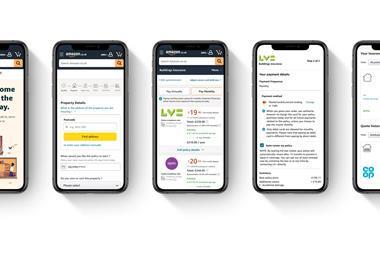Two industry leaders share their views on embedded insurance and what this model could mean for different players in the insurance market
Peter Thompson, chief executive of BGL Insurance:
Opportunity around embedded insurance is ‘no-brainer’ for brokers
Distribution is going to change significantly.

Companies in different sectors are definitely seeing insurance as an opportunity to grow as part of a more integrated customer offering - of which insurance is just one component. Brokers could be key to unlocking this growth.
There is a massive role for brokers to be involved in embedded insurance.
Firms that have a really digital relationship with their customers, that have got that embedded opportunity, are assessing our marketplace and saying ‘I can’t afford to tie my new capability and proposition to one risk carrier. They haven’t got the breadth of risk appetite and competitiveness to support all of my customers’.
Therefore, a panel-based proposition has to be the way to support it – and who could help put together a panel-based proposition? Who is better placed than a sophisticated, partnerships-based affinity player that is an intermediary, that is used to running panels?
It’s a no-brainer. There are a ton of opportunities out there if brokers want to open their eyes a little.
Amazon’s entry into the home and content insurance market in October 2022 is a fascinating development, for example. The retailer has been thinking about insurance for many, many years now.
It’s really interesting that Amazon has decided to pilot in the UK, where it is a super competitive market. Maybe this marks its first step into the insurance sector - dipping a toe in the water, so to speak, and utilising shorter question sets.
Read: Briefing - Time to get ready for embedded insurance
Explore more news analysis here, or read up on products here.
I was expecting Amazon’s entry into insurance to make a bit more of a splash, to have a bit more impact – but if the firm is taking a test and learn approach, then we’ll find out the full impact over time.
We are watching Amazon with interest, but it’s still too early to tell whether this development is going to be meaningful for the sector or not.
Peter Clarke, managing director of Insurercore:
Embedded insurance could pose ‘risk of further reputational damage’ if insureds are ‘ill informed’ about their cover
There is a lot of hype at the moment around embedded insurance and although I believe there is an opportunity for the insurance market to better engage with digital consumers through embedded partnerships with well known consumer brands, I also believe we need to tread carefully as a market when offloading the selling of our products to third parties.

Firstly, insurance should be an educated purchase so that insureds understand their cover and are informed on when and how they can make a claim.
The role of the broker has always been that of an advisor and not simply a distributer of insurance products.
By bundling insurance up in the sale of other products, the industry runs the risk of doing further reputational damage if - at the point of claim - the insured is ill informed on their cover and ends up having their claim declined by their insurance company due to small print.
If embedded insurance is to become the norm, then ensuring that the industry provides an educational buying process and a seamless, simple claims process is essential – although not easily achievable.
Although established insurance players have the experience to ensure customers are sufficiently educated, we will see whether during the gold rush to embed products whether all parties ensure they put the customer first and follow the necessary regulation – as opposed to just using embedded insurance to lower distribution costs to the detriment of the end user.
Secondly, due to the nature of online purchases, long question sets are rarely completed and tend to kill the buyer journey. Insurers tapping into embedded insurance, therefore, will need to be able to price effectively with very little risk information.
Read: Amazon’s online insurance store – what does it mean for the industry?
Explore more news analysis here, or read up on products here.
Although risk data can now be enriched by third party data sources, the products that can be offered in an embedded fashion will still have to be simple, with one price fitting all and based on limited cover.
This makes the policy less fit for purpose and more costly than if it were packaged within a wider policy.
The only way to tell whether the policies are providing value and are fairly priced is by waiting for the loss ratios to come out.
Without previous loss histories, we can only assume that there will be some mistakes in the early years, with some companies taking large losses if they don’t get the cover and pricing right.












































No comments yet